How ABA Therapy Supports the Development of Fine and Gross Motor Skills
Transforming Motor Skills Through ABA Therapy for Children with Autism
How ABA Therapy Supports the Development of Fine and Gross Motor Skills
Introduction
Motor skill development is crucial for children, especially for those on the autism spectrum, where challenges in coordination, balance, and motor planning are prevalent. Applied Behavior Analysis (ABA) therapy emerges as a powerful tool, offering structured interventions tailored to meet these challenges. This article explores how ABA therapy can significantly enhance both fine and gross motor skills, ultimately supporting broader aspects of child development.
Understanding Motor Skills Challenges in Autism
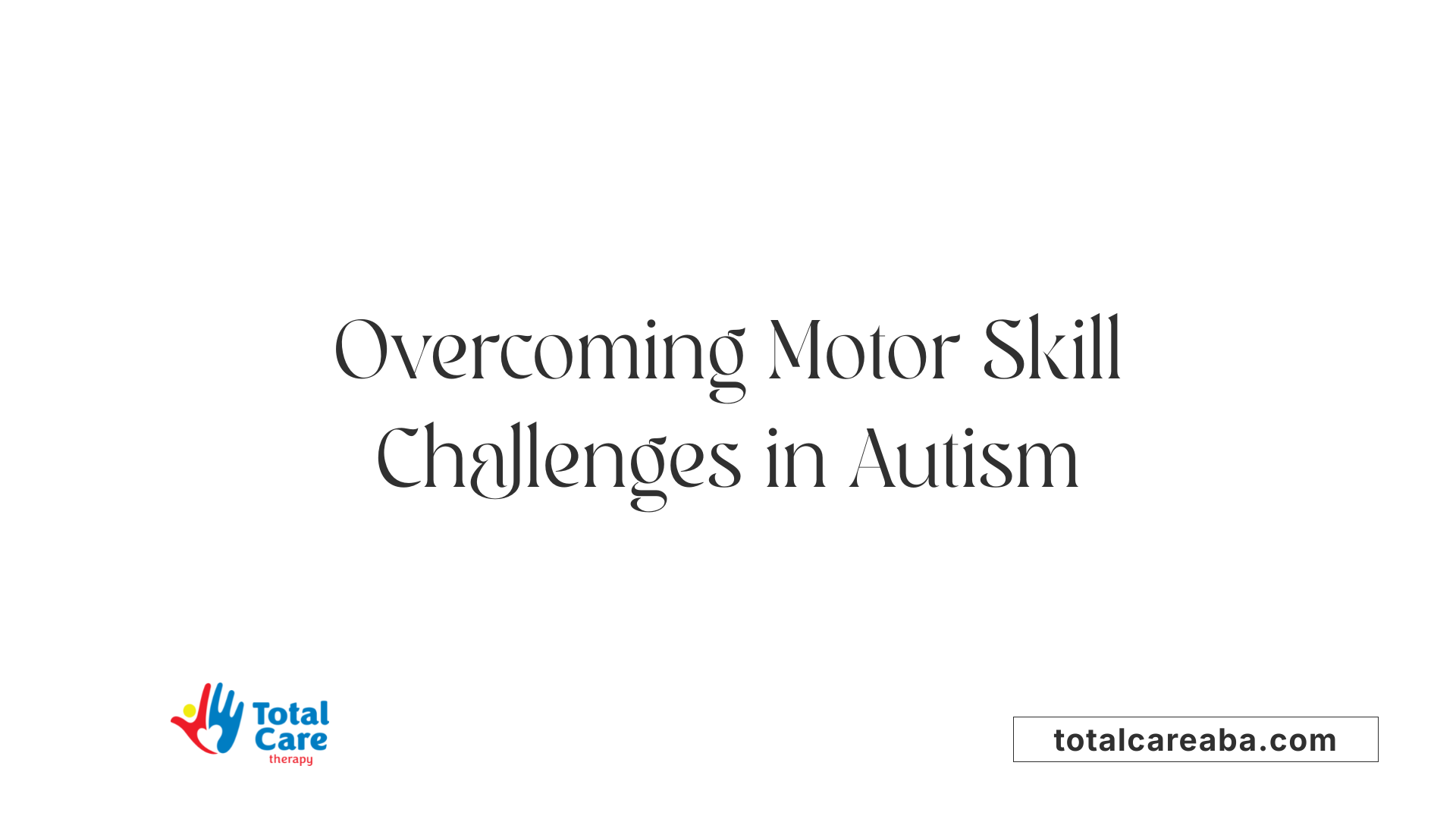
What challenges do children with autism face in developing motor skills?
Children with autism often face significant challenges in their development of motor skills. These challenges manifest predominantly in three areas: coordination, balance, and motor planning.
Coordination Issues: Many autistic children struggle with both gross and fine motor coordination. This can hinder their ability to perform tasks that require precise hand movements, such as writing, buttoning shirts, and using utensils.
Balance Concerns: Poor balance is commonly reported among children with autism. This can affect their participation in physical activities, making tasks like jumping, running, or riding a bicycle difficult. Children with better gross motor skills tend to engage more actively in leisure activities, highlighting the critical relationship between balance and motor function.
Motor Planning Difficulties: Difficulties in motor planning can result in challenges when trying to execute actions in a coordinated sequence, such as climbing stairs or participating in team sports. This is particularly problematic, as it affects their independence and confidence in engaging with peers.
Recognizing these challenges is vital for implementing effective interventions, including occupational and physiotherapy, aimed at enhancing these skills.
The Role of ABA Therapy in Motor Skill Enhancement
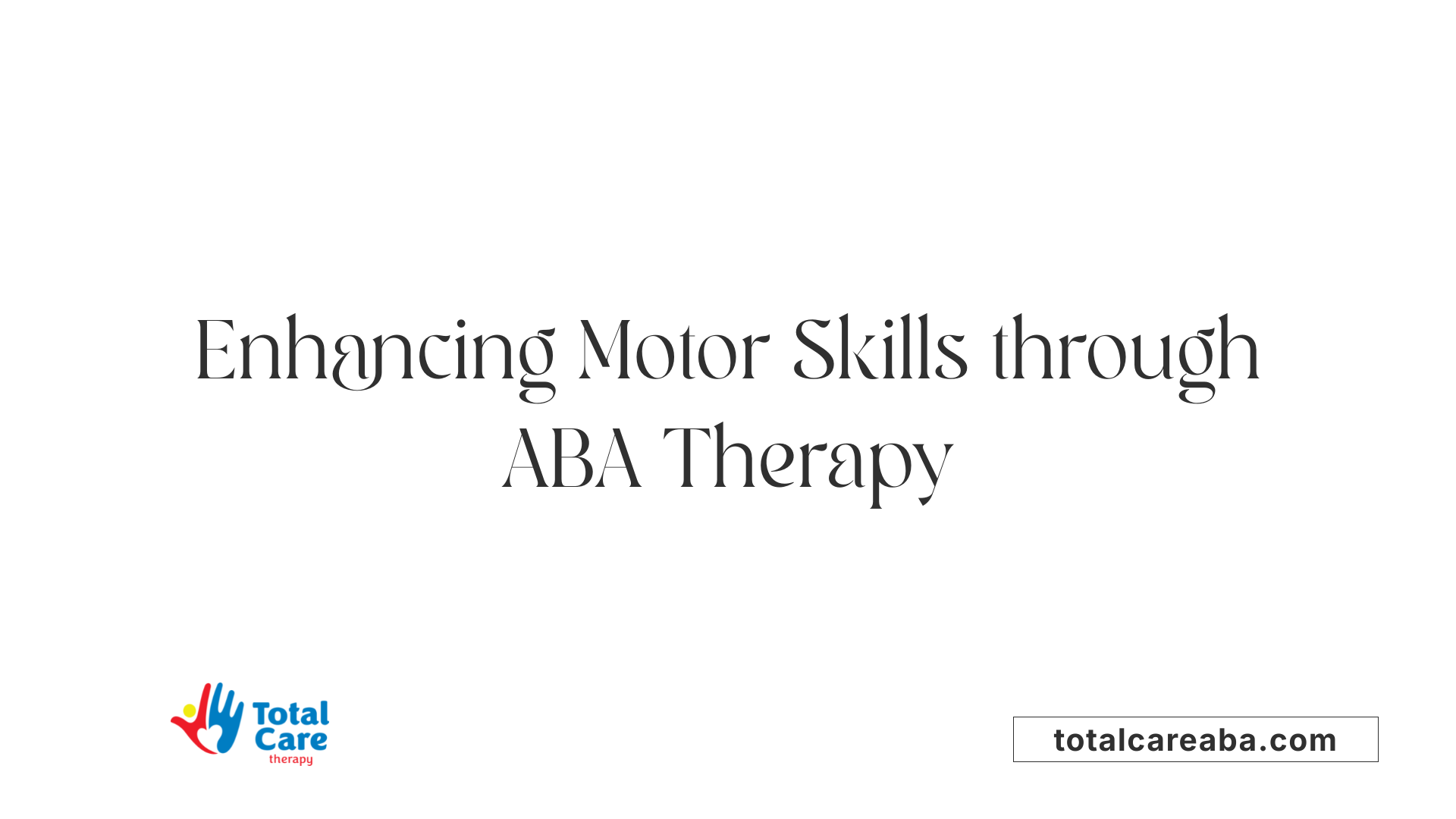
What role does ABA therapy play in enhancing fine and gross motor skills in children with autism?
Applied Behavior Analysis (ABA) therapy plays a significant role in enhancing fine and gross motor skills in children with autism. It utilizes structured behavioral interventions that are tailored to the individual needs of each child. This means that therapists assess a child's specific motor challenges, crafting personalized strategies to address them.
Purpose of ABA in motor skill development
The primary purpose of ABA in this context is to improve functional abilities that are essential for daily living. By focusing on task-oriented activities, ABA encourages repetition and reinforcement, leading to gradual improvements in coordination, balance, and strength. Typical activities might involve play-based learning that integrates physical tasks, making skill development both enjoyable and effective.
Tailoring interventions and holistic approach
Each child’s therapy plan can include specific exercises aimed at developing fine motor skills—like using scissors or buttoning clothing—and gross motor skills—such as running or jumping. Furthermore, a holistic approach is vital; combining ABA with other therapies, such as occupational and physical therapy, can create a comprehensive support system. This collaboration enhances overall motor skills by addressing both the physical and behavioral challenges faced by children with autism.
Overall, ABA therapy serves as a foundational element in improving motor skills, facilitating better engagement and independence in children with autism.
Strategic Approaches within ABA Therapy
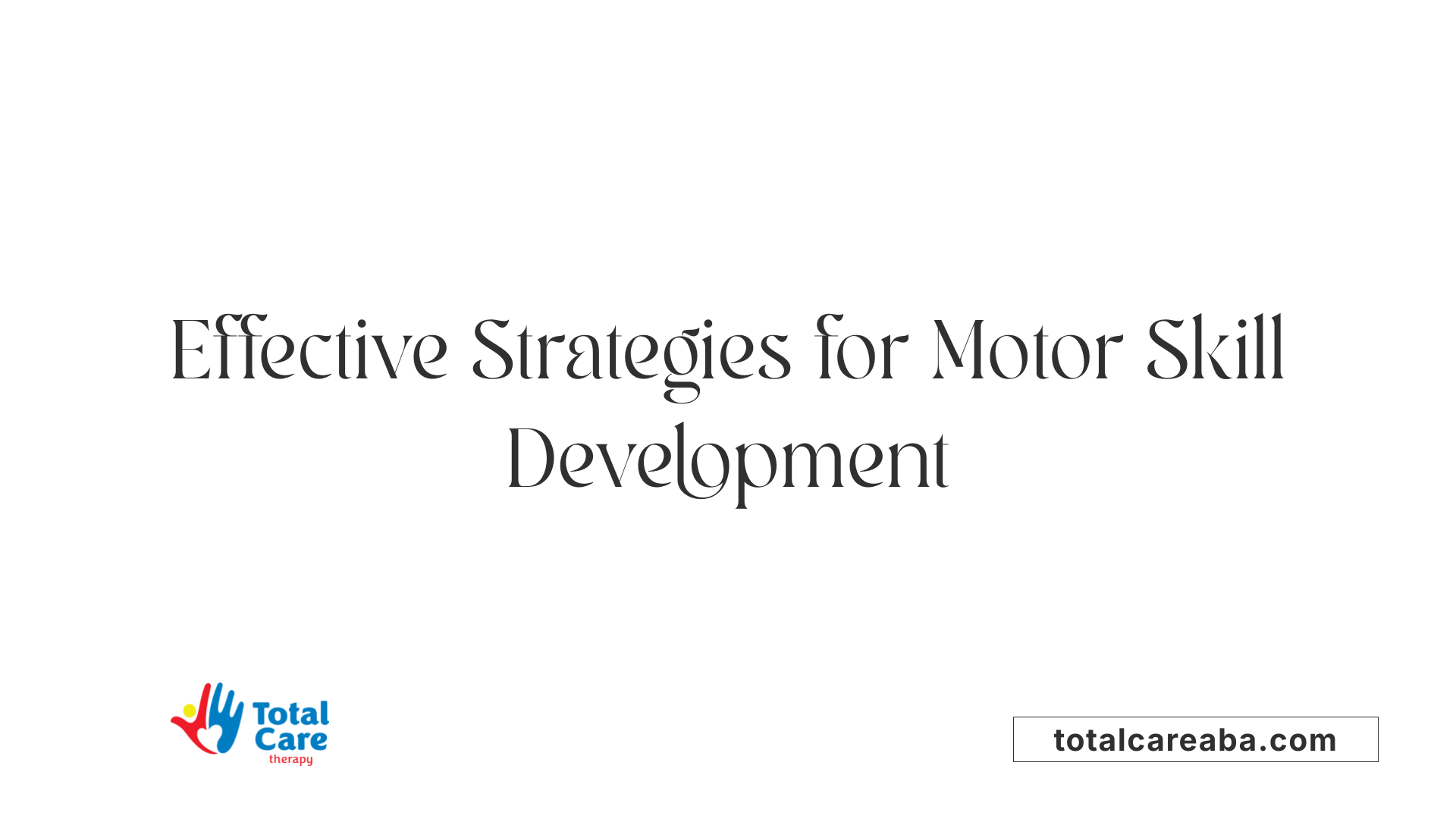
What are some effective ABA therapy strategies for improving motor skills in children?
Effective ABA strategies for improving motor skills include:
- Task Analysis: This involves breaking down a complex motor activity into smaller, manageable steps. Each step can be taught individually, allowing children with autism to gradually build their skills and confidence.
- Prompting and Fading Techniques: Initially, prompts such as verbal cues or physical guidance help children perform tasks correctly. Over time, prompts are systematically faded to encourage independence and self-initiation.
- Positive Reinforcement: Recognizing and rewarding successful completion of motor tasks significantly boosts motivation. This can be through verbal praise, tokens, or other appropriate rewards that encourage the child to continue practicing and improving their skills.
These strategies can be tailored to the individual needs and abilities of each child, making them effective for enhancing both fine and gross motor skills crucial for daily functioning.
To visualize these strategies along with their focus areas, here’s a summary table:
| Strategy | Description | Focus Area |
|---|---|---|
| Task Analysis | Breaks tasks into simple steps for easier learning. | Skill Acquisition |
| Prompting and Fading | Uses guidance to teach skills, slowly reducing support. | Independence |
| Positive Reinforcement | Rewards successes to motivate and encourage progress. | Motivation & Engagement |
Incorporating these methods within a structured ABA program can help maximize motor skill development in children with autism, fostering greater independence and confidence in their abilities.
Assessing Motor Skills in ABA Therapy
How are motor skills assessed in children undergoing ABA therapy?
Motor skills are crucial in supporting the development of children with autism spectrum disorder (ASD). In ABA (Applied Behavior Analysis) therapy, assessing these skills ensures targeted interventions. To effectively evaluate motor abilities in children undergoing ABA therapy, several assessment methods are utilized:
1. Standardized tests
These provide objective measures of motor skills. Commonly used assessments include the Peabody Developmental Motor Scales and the Bruininks-Oseretsky Test of Motor Proficiency. These tests evaluate both gross and fine motor abilities through structured tasks designed to identify strengths and weaknesses.
2. Observational assessments
Through direct observation during structured sessions or play activities, therapists note motor performance in real-world contexts. Observational assessments capture behaviors like coordination, balance, and engagement in various physical tasks, providing insights into how motor skills manifest in day-to-day activities.
3. Performance-based measures
These practical assessments involve children performing specific motor tasks such as catching a ball or using scissors. Performance-based measures highlight a child's capability to execute skills necessary for their daily routines and social interactions.
| Assessment Method | Description | Purpose |
|---|---|---|
| Standardized tests | Objective evaluations through structured tests | Establish baseline and track progress |
| Observational assessments | Evaluating motor skills in naturalistic settings | Understand real-world application of skills |
| Performance-based measures | Practical tasks to assess execution of motor skills | Identify functional capabilities in daily life |
Factors Influencing Motor Skill Development in Autism
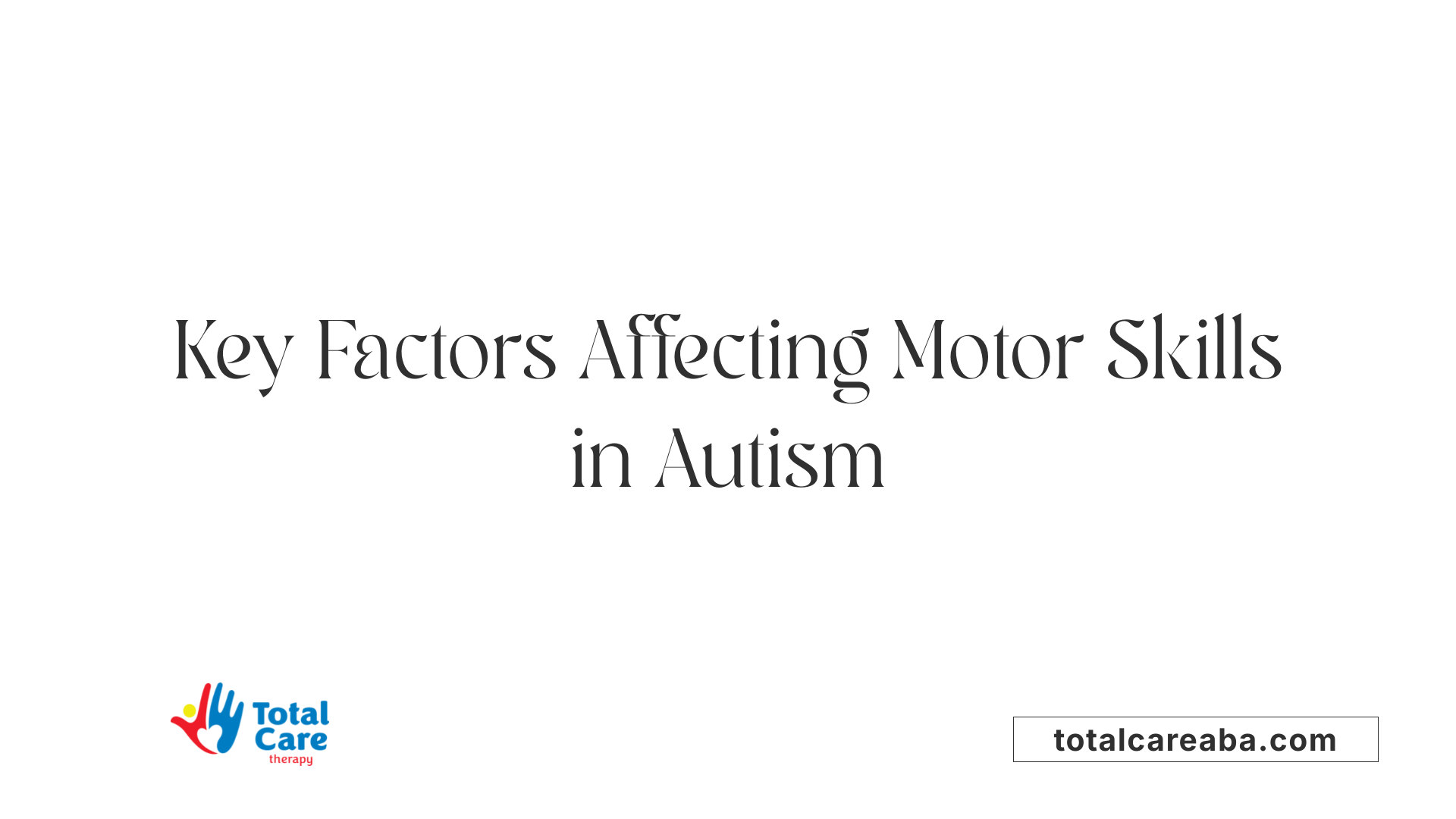
What factors influence motor skill development in children with autism?
Motor skill development in autistic children is influenced by several interrelated factors that can significantly impact their overall functioning. One of the primary factors is the severity of autism symptoms. Children with more pronounced challenges in communication and social engagement often experience greater delays in both gross and fine motor skills. These delays can hinder participation in activities essential for development and social interaction.
Another critical aspect is sensory processing abilities. Many children with autism experience sensory sensitivities which can affect their engagement in motor activities. A child who feels overwhelmed by sensory inputs may be less likely to practice and develop motor skills. Consequently, strategies to manage sensory sensitivities can lead to improvements in motor skill development.
Lastly, the presence of co-occurring conditions, such as ADHD or dyspraxia, plays a significant role. Conditions like these can pose additional challenges that complicate motor skill acquisition and coordination. Understanding these influences is vital for tailoring interventions that effectively support children with autism in improving their motor skills.
Research Insights on ABA Therapy Effectiveness
What research-based insights exist on the effectiveness of ABA therapy for motor skills development?
Research indicates that Applied Behavior Analysis (ABA) therapy can significantly enhance motor skills in children with autism spectrum disorder (ASD). ABA therapy is effective when interventions are consistently applied and customized to meet each child's unique needs. Ongoing assessment allows for adjustments to be made to the intervention plans, which is essential for optimal progress.
Effectiveness of tailored interventions
Tailored interventions in ABA therapy focus on specific goals related to motor skill development, engaging children in practice that reinforces desired behaviors. This helps in improving motor planning, coordination, and execution of both fine and gross motor skills. Studies have shown that children who participate in structured ABA therapy exhibit notable improvements in daily activities, contributing positively to their independence and self-care abilities.
Early intervention importance
The effectiveness of ABA therapy is particularly pronounced when initiated early in a child’s development. Research underscores the importance of early intervention strategies. Addressing motor skills deficits promptly not only fosters improved physical functioning but also enhances overall developmental outcomes and readiness for social interactions.
ABA Therapy and Overall Child Development
How can ABA therapy support overall child development, emphasizing motor skills in children with autism?
Applied Behavior Analysis (ABA) therapy plays a significant role in enhancing overall child development, particularly for those with autism. Through structured interventions, ABA focuses on improving various skills, including essential motor skills.
Enhanced Cognitive and Social Skills
ABA strategies are designed to foster not just motor abilities but also cognitive and social skills. By integrating activities that require fine and gross motor coordination, children learn to engage more effectively with their surroundings. For instance, tasks like buttoning clothes or playing ball games aren’t just exercises; they actively promote social interactions and cognitive engagement.
Holistic Development Approach
This holistic approach considers the unique needs of each child, ensuring that interventions address multiple domains of development—motor skills, communication, and socialization. By encouraging practice in real-life scenarios, such as dressing or using utensils, ABA helps children with autism become more independent and confident in their daily lives.
In conclusion, ABA therapy provides a multifaceted framework that significantly supports motor skill development while enhancing cognitive and social abilities, leading to well-rounded growth for children on the autism spectrum.
Importance of Gross Motor Skills in Daily Life
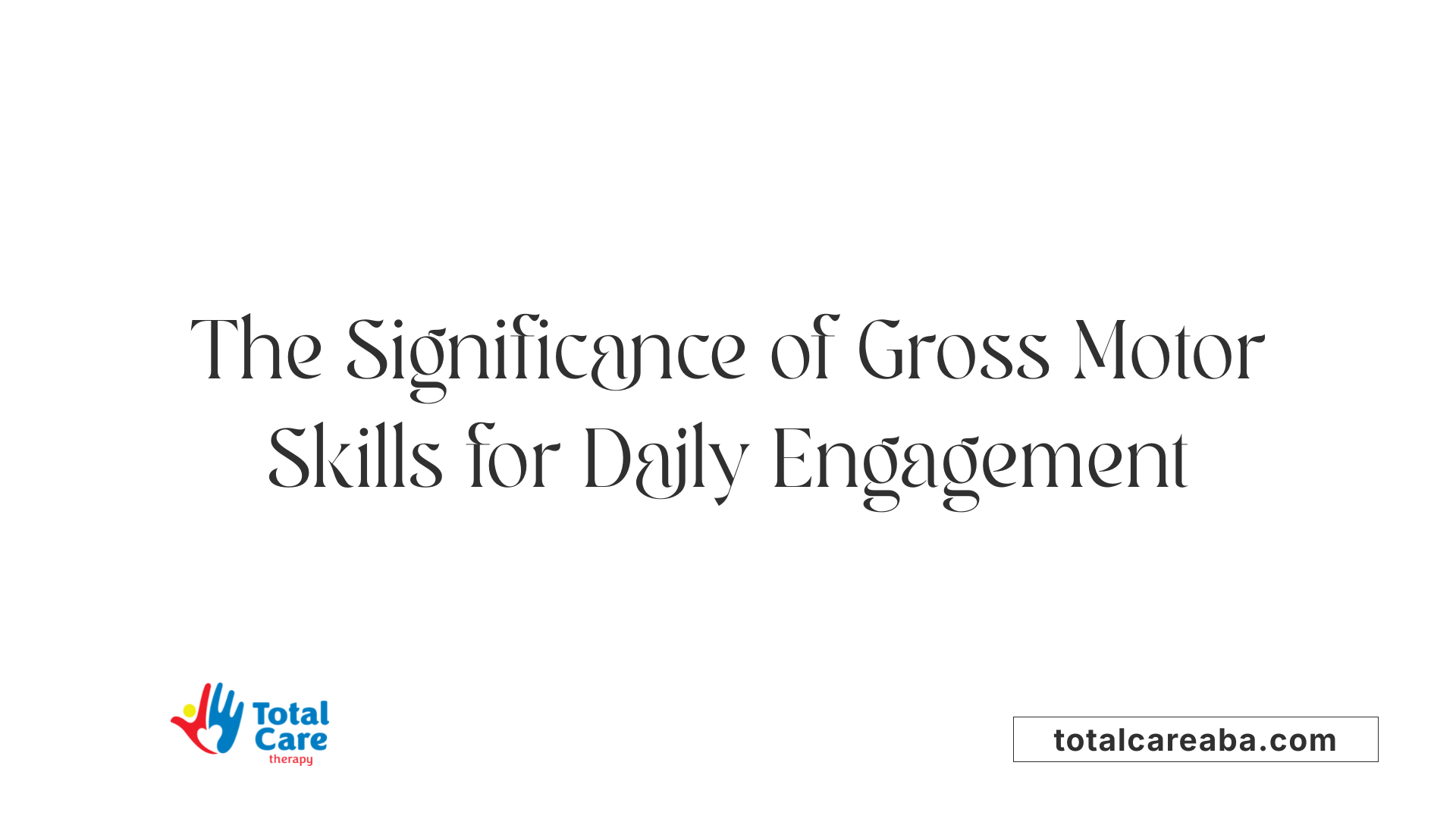
Role in physical activities
Gross motor skills are vital for engaging in various physical activities such as running, jumping, and playing sports. Children with autism spectrum disorder (ASD) often face challenges in these areas, impacting their ability to participate in structured exercises and free play. Studies indicate that children with better gross motor skills tend to exhibit improved muscle strength, coordination, and overall physical fitness. This foundation not only supports their participation in enjoyable activities but also promotes healthier lifestyles.
Social interactions
The development of gross motor skills significantly influences the social engagement of children with ASD. As they participate more in activities like climbing, throwing a ball, or even just walking with peers, they enhance their social interactions. Improved motor abilities lead to higher participation levels in leisure activities, promoting friendships and teamwork among children. Research shows that children who demonstrate greater gross motor skills are more likely to engage actively in self-care and social interaction, indicating the importance of these skills for overall social functioning.
Cultivating Fine Motor Skills through ABA
Activities for fine motor improvement
Applied Behavior Analysis (ABA) therapy is a powerful tool in enhancing fine motor skills for children with autism. Activities designed to engage children effectively focus on practices that promote coordination and control. Some effective methods include:
- Manipulating small items: Using beads or buttons to create projects helps improve dexterity.
- Playing with dough: Moldable materials strengthen hand muscles while allowing creative expression.
- Lacing objects: This promotes hand-eye coordination and fine motor control.
- Using chopsticks: This activity increases finger strength and precision, providing fun and skill development simultaneously.
Impact on daily activities
Improving fine motor skills through ABA therapy can significantly boost children's daily functioning. Enhanced dexterity aids in tasks like:
- Writing and drawing: Better fine motor skills translate into improved handwriting and artistic expression.
- Self-care tasks: Activities such as buttoning clothes or using utensils become easier, fostering independence.
- Social interactions: As fine motor proficiency grows, children can engage more in play, contributing to their social development and interactions with peers.
Intervention Strategies for Gross Motor Skills
Physical Exercises
Physical exercises serve as a foundation for improving gross motor skills in children with autism. Activities such as trampolining, swimming, and simple running drills not only foster muscle strength but also enhance balance and coordination. Incorporating structured physical activities into daily routines can drastically improve a child’s ability to perform larger movements.
For instance:
- Trampolining: Promotes balance and helps develop coordination through jumping activities.
- Swimming: Engages multiple muscle groups, improving overall fitness and motor control.
These exercises contribute to building the muscle tone necessary for effective motor planning and confident movement.
Engagement in Social Activities
In addition to physical exercises, engaging in social activities can significantly bolster gross motor skills. Activities like climbing at playgrounds or participating in team sports provide both physical challenges and social interaction. Children who engage in these activities often show improved coordination and confidence in movement.
Moreover, these social experiences can reinforce engagement in everyday self-care tasks. Research highlights a positive link between gross motor ability and enhanced social interaction, indicating that children with better motor skills tend to participate more actively in social settings. This dual benefit supports overall development, making social engagement essential for children with autism.
Conclusion
ABA therapy offers profound opportunities to enhance motor skills in children with autism by addressing specific challenges these children face, such as coordination and balance issues. With a comprehensive approach that includes assessment, tailored interventions, and a focus on holistic development, ABA therapy plays a pivotal role in supporting children's overall growth. This support extends beyond motor skills, fostering better social, cognitive, and daily functional abilities, thus paving the way for a more integrated and engaging learning experience for children with autism.
References
- Autistic Children and Motor Skills
- Autism and Motor Skills Challenges
- Developing Fine & Gross Motor Skills - Early Autism Services
- The intersection of gross motor abilities and participation in children ...
- Autism and Motor Skills, Explained - Treetop ABA
- 5 Skills Children Will Improve With ABA Therapy
- Autism, Motor Development and the NDIS | Physio Advice








